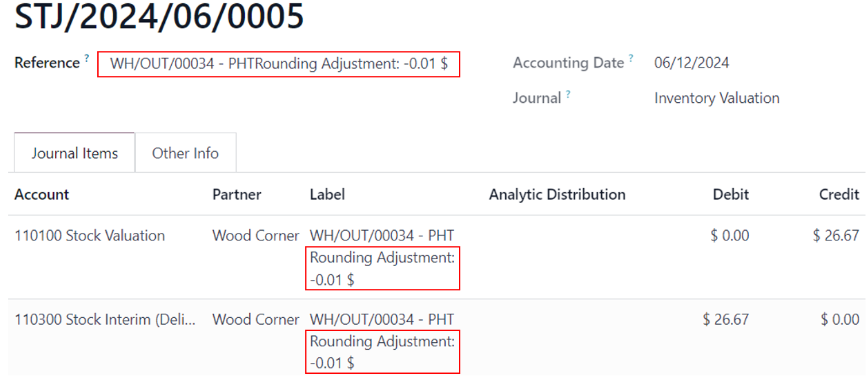Prerequisite:
1. This document is based on v17.1 and USA localization.
2. This document is based on the product category setting with average costing and automated valuation.
3. In the following document, we are going to discuss why Odoo created the automated journal entry with ‘Rounding Adjustment and why we see the amount of 0.01.



Indeed, this is the best answer to make anyone understand.